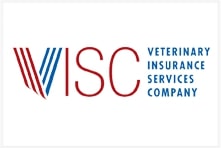This article was originally printed in the March/April 2024 issue of the California Veterinarian magazine.
When you graduate from veterinary school, you never know where your journey will take you. I would have never envisioned myself as an in-home euthanasia veterinarian—but this is where I found contentment and gratification. Right out of veterinary school, I took a job at a feline-only practice. I later transitioned into a general practice that had a large number of geriatric patients. I found that anesthesia, pain management, dermatology, and internal medicine were my favorite self-study topics. At one point, I ran a practice but soon discovered that it didn’t appeal to me. I left general practice when my daughter was born but happily found a job where I could work part-time—a physical rehabilitation and therapy practice for animals, where I still work.
In December of 2022, with my children mostly grown and extra time on my hands, I started looking for an additional way to help both people and animals. I began shadowing several veterinarians who were doing in-home euthanasia and discovered it was compatible with my skills. Having not practiced surgery or even seen a healthy young animal for many years, I wouldn’t have to relearn everything necessary to be a successful generalist, and I could utilize my minor in psychology and interest in supporting those with mental health challenges to help grieving clients.
Since April 2023, I have worked as an in-home euthanasia veterinarian for cats and dogs at Restful Paws in the San Jose area. It is a fulfilling position for a number of reasons:
- I enjoy driving and being outside, rain or shine.
- I am a people person and a healer, and it doesn’t matter if it is for people or animals. I enjoy connecting and relating to people of all ages and interests. I challenge myself to personally connect with every client and give them the end-of-life transition experience that supports their needs. Sometimes this means grief education, sometimes talking, sometimes neither. But it definitely means listening and giving validation.
- I love hearing stories from clients about how their pet’s presence impacted their lives in a positive way, and I am encouraged each time I see the “Hallmark movie” version of the human-animal bond in action.
- I appreciate the medical challenge to provide anesthesia to often very old, very critical patients. I want my patients safely anesthetized so their family can say goodbye to their beloved friends on their timetable, at least until the final injection. These guys are a lot stronger than we think! As an advocate for avoiding complicated grieving by our clients, I invite my colleagues, when being the bearer of bad news, to consider allowing critically ill patients, unless actively suffering, to go home with pain control, if only for a day or so, to allow their family to say goodbye with dignity (to cuddle and spoil them rotten, if at all possible) instead of pushing for immediate euthanasia at the clinic.
As with any job, there are challenges. I would say time poses the biggest challenge in this profession. Whether it is traffic, or keeping up with my schedule while allowing clients the time they need to say goodbye, I have to suspend my anxieties. Sometimes I have to practice my own mindfulness for acceptance of the situation and exercise patience.
This is also an emotionally charged job. To maintain my mental health, I exercise regularly and force myself to stay in contact with friends and family so I have a strong support system. Regulation of emotion is something you are encouraged to learn in martial arts (along the way, I received a third-degree black belt in Taekwondo).
I am proud of the work I do. I feel honored when invited into someone’s home, especially when they are willing to show me their true, authentic selves and feel safe enough in my presence to cry, blow their nose, and leave tissues in a pile on the floor. I appreciate being able to support our clients on what is likely one of the worst days of their lives. And I know I have done a good job when clients tell me that it was really nice to meet me, but then awkwardly admit that maybe that isn’t quite the right thing to say and just end with: “Thank you.”








